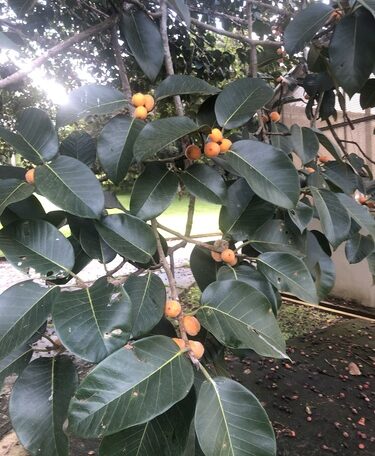Botanical name: Ficus drupacea | Hindi: | Marathi: बुराली वड

About
The Burali Wad, also known as the Brown-woolly Fig or Mysore Fig (Ficus drupacea), is a majestic strangler fig reaching up to 30 meters. Its dense canopy boasts large, waxy leaves covered in a unique brown woolly pubescence. Bright yellow to red fleshy fruits (figs) dangle amidst the foliage, attracting birds and other wildlife. This tree’s fascinating lifecycle begins as an epiphyte on another tree, eventually engulfing and absorbing it.
Interesting Facts



Anandvan Trivia Quiz
Question 1: Why do bats love me but cats don’t?
Answer: Bats, primarily fruit-eaters, are drawn to the sweet, ripe figs. Their excellent eyesight and echolocation help them navigate the dense canopy to locate these tasty treats. Conversely, cats, being obligate carnivores, have no interest in the fruit. Their keen sense of smell might even be deterred by the Burali Wad’s milky latex, a potential irritant. Additionally, the tree’s rough bark and hidden nooks offer poor climbing opportunities for cats, making hunting prey there impractical.
